
|

|
|
Home Site Search Contact Us Subscribe
|
|
|
One-on-One: Architecture that leads to a point: Interview with Daniel Libeskind "Every building, every city should have a story." By Vladimir Belogolovsky September 20, 2011 Daniel Libeskind is a great storyteller. I first heard him talk in December 2002 at the World Financial Center Winter Garden during a moving presentation of Memory Foundations – his scheme for the reconstruction of the World Trade Center in Lower Manhattan. As Libeskind presented his vision, I noticed hundreds of people completely frozen to their spots, standing motionlessly, absorbing every word, gesture, and image, many with tears in their eyes. The architect succeeded in capturing their hopes and dreams. I think everyone at that moment sensed that he would become the winner. There were other projects that dared to reinvent architectural conventions, delivered by international teams of some of the most talented architects, but it was Libeskind’s singular standpoint that profoundly struck the emotional chord with the audience. In February 2003, this project won him the role as the site’s master plan architect.
Something extraordinary happened that December day. Just before Libeskind spoke, the chief planner for rebuilding Lower Manhattan, Alexander Garvin, addressed the press: “Tomorrow I want to see your stories on front pages and television programs around the world!” For days architecture was the world news! The architects became the newsmakers. When Libeskind got off the stage, he was stormed by at least three dozen journalists and cameramen in full gear, turning the architect into an instant superstar. There was no way to talk to him properly. I looked across the magnificent space and saw his wife, Nina, standing proudly, but alone. I approached her and asked if I could meet her husband the following day for an interview.
Nina choreographed our locations for a number of short meetings that changed time and time again, depending on the rollercoaster schedule of the man of the hour. Libeskind was still living in Berlin at the time and many of his acquaintances, friends, colleagues, and students were trying to catch up with him. He was running around town like a mad man, and I was chasing him from morning to almost midnight, pulling him here and there for a few questions at a time. The interview finally wound down at a very late exhibition opening of the World Trade Center finalist schemes, where the presentations took place the day before. At one point there was a long line of people leading to Libeskind who had just about a minute or less to talk to each person. Every single encounter started with a huge smile, and no matter how many times people asked him the same questions, there was no end to his exhilaration and positivity that he projected on everything around him.
The architect ended his presentation with the phrase: “Life is victorious!” He chose the same words to complete our interview that day. We should all embrace his enthusiasm because he is exploring a very rare type of architecture – it is charged with emotions. He is now working in many countries on different types of projects, refining what is perhaps the most consistent and recognizable hand of any architect, yet he is ready to surprise you every time you think you know his next move.
The following interview took place in his office on Rector Street next to Ground Zero in early September 2011, as the 10th anniversary of 9/11 approached, with the opening of the much-anticipated September 11 Memorial, the first major element of Libeskind’s master plan.
Vladimir Belogolovsky: It has been a decade since the Twin Towers were destroyed, and almost nine years since you first presented your winning World Trade Center project. There was huge attention by the mass media to all of the finalists. It was a very hopeful moment for architecture. Your project, although much altered by numerous politicians, planners, and architects, is finally getting built. How do you think the world of architecture has changed in the last 10 years?
Daniel Libeskind: I think architecture changed fundamentally. Now, not only in New York and America, but just about everywhere, you no longer can build even small projects without public participation. People now want to know what is being built. Why is it this way? What is the meaning of this and that? Who is building it? Is it sustainable? The question of how to fill the void in the middle of New York is very important to people. And their interest is not just technical but cultural. It is no longer satisfactory to rely on decisions made in closed corporate boardrooms. The public now wants to participate in the process of building our environment.
VB: How would you describe your own experience in the last decade – going from mostly paper architect to a busy practitioner with dozens of projects all over the world?
DL: Well, I opened my office in 1989 when I won the Jewish Museum competition in Berlin, and then worked on the Felix Nussbaum Museum, which was my first building finished in 1998. The Imperial War Museum in Manchester was finished in 2001. So I was not really a paper architect. But certainly winning the World Trade Center competition in early 2003 – such a complex urban project – totally transformed my practice and lead to more large-scale projects globally. I am interested in working on all kinds of projects – from museums to shopping malls to residences. My studio in Berlin had about 25 people, and now here in New York, our main office has about 80, and in Milan and Zurich about 20 at each location. But if I wanted to, I could have expanded the office tenfold or more. There is so much work! There is so much pressure! But it is not about quantity. It is about quality and about knowing every person who works with me. I want to be involved in everything.
VB: When you were asked to describe an evolution in your work, you said: “I am doing the same project. It is all the same project.” You said that you never start with a blank piece of paper – it is rather a continuation. Could you elaborate?
DL: Of course, you have to start with a new wonder and new encounters with a new place, new people, and so on, but it is never a tabula rasa. Architecture is not just about materials. It is about an idea, a spirit, about culture. And that is an ongoing quest which is reflected in drawings, writings, built buildings... Architecture is a world. It is not a building. I just finished a series of drawings that are not instrumental for my building projects. They are explorations such as my early projects – Micromegas or Chamberworks drawings. They are sources for architectural thinking.
VB: Could you tell me a bit about your early projects – Micromegas and Chamberworks drawings? They are architectural meditations, right? But are they pure abstractions or is there a narrative and do you see them as a sort of DNA for your current projects?
DL: Well, a meditation is a passive term but they are really transformations of the world the way we know it. These drawings have a quality of detachment from an immediate task but they are also a source for transformations.
VB: Is there a particular narrative?
DL: Well, these drawings are drifting in no man’s land between reality and dreams, the world of the unknown.
VB: Do you ever go back to these drawings in search of ideas?
DL: Sure.
VB: And what do you see there?
DL: Well, I don’t look at these drawings as if they were a crystal ball to figure out a new plan. But the drawings themselves speak up. They are in a way instruments for thinking. They unravel, project, and show new directions.
VB: You did Micromegas drawings in 1979, years after you were a student at Cooper Union in the late 1960s. Did you start producing these sorts of drawings while still at school?
DL: Yes, actually when I was at school, I refused to do real kind of projects.
VB: It’s not like Cooper Union forces students to do real projects...
DL: You are right, they don’t. But even within the school there are theoretical projects for buildings. I chose a very different approach. I worked on collages, non-utilitarian architectural fragments very early on. Then I developed this approach when I was a young professor at Cranbrook Academy.
VB: Were these drawings your side project?
DL: No, they were my central project!
VB: Wasn’t being professor your day job?
DL: I was artist-in-residence and could’ve stayed there for life, but did not feel it was the right thing to do. So working on drawings was my primary job. But even later on, when I became a professor at Harvard and other schools, I never used drawings as an escape.
VB: So there is a real continuity of drawing, starting from your student years to the present. Many of your projects tend to escape order, yet they are not chaotic. You said: “You can’t plan chaos, but you can gather its traces.” Your architecture is about gathering traces. There are traces of statistics, symbols, narratives, legends, dreams, myths... Could you give examples of such origins and ideas for some of your more recent projects, such as the Royal Ontario Museum in Toronto?
DL: In the case of Toronto, I was inspired by the Museum’s collection. Among other things it has crystals, which I saw in person. And you know, when I was looking at my own drawings during the competition I wondered if something like that could be built. And frankly, I think you should start your project with a dream, something radical and that may not seem possible. But if you look at the building today it is very close to my original drawings.
VB: Let’s take two examples of your work – the Military Museum in Dresden [opening October 2011] and Denver Art Gallery [2006]. One is a radical reconstruction of a neoclassical building in a city that was almost erased from history and now rebuilt. The other is a building from scratch in downtown Denver. How did you approach these two problematically very different projects, which have very similar visual features?
DL: These buildings are very different. They may share something in common simply because of me, the architect. The programs are very different. The Denver project is an addition to a building by Gio Ponti. We had to add new spaces for the Museum’s collection, as well as new social spaces. I called my addition “Two lines going for a walk,” a kind of intertwining of a prismatic topography of the Rocky Mountains. It is a dramatic interpretation of the mountains, the valleys, nature, and the city itself against beautiful Colorado sky. The Dresden Museum presents a vector, rising from the ground. It cuts through two historical walls to create a contrasting disorder to the original building’s order. This new, inserted structure rises out of the building’s envelope and provides a space for reflection, as well as a particular view of the city, which is the view of three points from which Dresden was destroyed. So the intentions and approaches are very different in these projects.
VB: Often your entire composition employs expressive angular forms and some of your elevations, such as in the Jewish Museum in Berlin, look like abstract paintings. What is the origin of your particular stylistic language – diagonals, triangulation, sharp corners, crossed lines, zigzags, and so on?
DL: If I could answer this question I would become my own critic. I can only say that, for example, in the movies I don’t like when views are dissolved. I like frames cut. Certain forms speak to me. I have a certain language of communication. Why do we recognize certain music or writing? I don’t know why, but we can distinguish particular realities that communicate to us. I lean toward forms that lead to a point and that try to make a point.
VB: Aha! I’ll buy that. I was looking at your Micromegas drawings, trying to break the code, to find an origin or a narrative... But then it occurred to me that it is a pure abstraction, just like a painting by Kandinsky.
DL: Well, it is one analogy. Architecture is not a new field and its sources are deep. Whether it is Kandinsky, Uccello, Leonardo... I might get inspired by a particular poem from Shakespeare or Emily Dickinson that suddenly pops into my head for no reason at all.
VB: Once I was writing a story. When it was almost finished I stopped at a bookstore, went to a shelf full of books and picked up one almost by chance. When I opened it randomly I saw a hint on how to conclude my story right there.
DL: In my field I cannot be very arbitrary. It is not a total chaos. You have to look at the linkage of things that you learn. You have to follow the signs that are meant only for you.
VB: For you, architecture is a story. Your projects tell stories about a place, about the fate of a person. Storytelling is something that is encouraged in your family, right? I read that when you dine with your wife and kids you never discuss work or school, but every meal is a storytelling meal. What kind of stories are these?
DL: These are all kinds of stories – ancient, religious... What’s important is to understand your own role in these stories. You have to realize that every story you tell, you are not just a teller. You might find yourself in it. There is a world in each story. Stories transform as they are told. And it is important to see positive in each story.
VB: You work simultaneously on a number of projects. Do you develop a particular story or narrative for every project, or are you recycling certain ideas developed earlier?
DL: It is the opposite. I don’t come up with stories. It is the stories that develop me. The site, the program, the people – they have the stories. I just have to listen. You can’t make up stories. That would be meaningless.
VB: Should every building have a story?
DL: Sure. If there is no story then it is just a hunk of metal, glass, and concrete, nothing else. There is no future there. Every building, every city should have a story – a story about lives, about people. Otherwise a building is an object, an abstraction...
VB: In various interviews you’ve said that buildings are not just about technical issues and about fetishizing technical gadgets – they are not just about aesthetic pursuits, but about telling stories. They transport us somewhere new, somewhere else. You strive to create spaces that never existed and never experienced. You don’t like neutrality, and do like expressive and emotional spaces. What else?
DL: We all see very unique visions. We need to ask all kinds of questions: Who are we? Where are we going? These are the central questions for anyone to ask about themselves and their particular place in the world. I see the world as something open. It has a mystery that will never be solved by any science. Architecture is very crucial to understanding many things because it provides space to see the sky, to see the street, to see others as they enter through the door...
VB: Before turning to practice you were a teacher, a researcher, and a theoretician. Do you still get involved in theoretical research? If you had time between projects, what would you draw or what would you want to imagine or dream about?
DL: I never thought of myself as a researcher or a theoretician. When I was younger – drawing all day long and teaching – I thought I was doing architecture. Others thought – this guy is not doing architecture. Why isn’t he in an office, working on buildings? But I was absolutely convinced that I was the one who was practicing architecture. Because I believe that architecture is multiform, and just working on a building is not what I think architecture is about. Even building a whole city is not exhausting the possibilities of what architecture can be. So doing architecture to me means to follow many paths. And I never set myself a goal. The goal is unknown. I only know the path that I am taking.
VB: What’s your dream, Mr. Architect?
DL: Continue the path and maintain the naïveté of the beginner who wants to listen to the world. You know, too soon people become experts at knowing how to do things. So you are expected to do what you know – again and again. But I want to be free. I want to find architecture that would emancipate people, that would promote truth, beauty, and justice.
VB: You believe that architecture should mirror the complexity of our modern lives and our intellectual desires. You just mentioned that you don’t set goals because of your desire to remain free. But to finish this conversation, you follow a path therefore you must have a goal, right? What do you think is the goal of an architect and how do you see your own goal?
DL: Architects do not work for themselves. We respond to various tasks. We respond to what cities and people need and want. And my goal... it is in a clutter of unknown... The goal is to stay on the path of exploring architecture.
Vladimir Belogolovsky, founder of the New York City-based Intercontinental Curatorial Project Inc., organizes, curates, and designs architectural exhibitions worldwide. Trained as an architect at Cooper Union, he has published more than 100 articles in American, European, and Russian publications, and is the American correspondent for the Russian architectural journals Architecturny Vestnik, SPEECH, and TATLIN. He has authored several books, including Felix Novikov for the series Masters of Soviet Architecture, and Green House on leading sustainable projects. His book Soviet Modernism: 1955-1985, written with architect Felix Novikov, was released in October 2010. He is currently working on a book, Harry Seidler: The Collaborator (Images Publishing) to be released in Summer 2012, and is curating a Harry Seidler traveling exhibition to go to Riga, Tallinn, Paris, Houston, North Carolina, and Sydney from 2012 to 2014. He can be reached at vbelogolovsky@gmail.com.
Also by Vladimir Belogolovsky
One-on-One: Architecture of Emotion and Place: Interview with Bartholomew Voorsanger, FAIA, MAIBC The architect's aspiration to create expressive, dynamic spaces is absolutely the key to his work.
One-on-One: Architecture as a Social Instrument:
Interview with Bjarke Ingels of BIG
One-on-One: Putting Colors Together: An Interview
with Will Alsop
One-on-One: The Art of Ennobling Communities:
Interview with Sara Caples and Everardo Jefferson
One on One: Elusive Architecture: Interview with
Kengo Kuma
|
(click on pictures to enlarge) 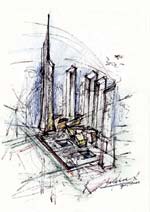 ©Studio Daniel Libeskind Memory Foundations, New York 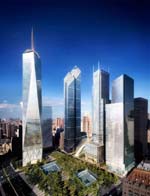 ©Silverstein Properties SPI World Trade Center (under construction) 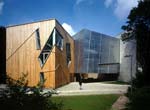 ©Bitter Bredt Felix Nussbaum Museum, Osnabrueck, Germany, 1998  ©Ros Kavanagh Grand Canal Square Theatre and Commercial Development, Dublin, Ireland, 2010; opening night, exterior 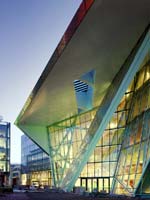 ©Ros Kavanagh Grand Canal Square Theatre and Commercial Development, Dublin, Ireland, 2010; theater exterior 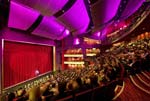 ©Ros Kavanagh Grand Canal Square Theatre and Commercial Development, Dublin, Ireland, 2010; theater interior 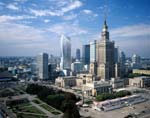 ©Aldinger & Wolf Zlota 44, Warsaw, Poland (under construction)  ©dbox Haeundae Udong Hyundai I' Park, Busan, South Korea (under construction)  ©Studio Daniel Libeskind Military History Museum, Dresden, Germany (under construction) 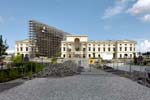 ©Studio Daniel Libeskind Military History Museum, Dresden, Germany (under construction) 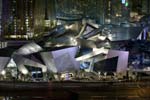 ©Scott Frances MGM Mirage City Center, Las Vegas, 2009 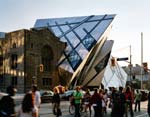 ©Steven Evans Photography Royal Ontario Museum, Toronto, 2007; Bloor Street elevation 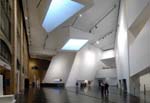 ©Michele Nastasi Royal Ontario Museum, Toronto, 2007; lobby with crystalline skylights 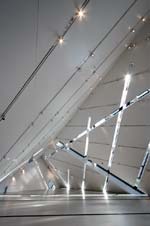 ©Sam Javanrouh Royal Ontario Museum, Toronto, 2007; gallery interior 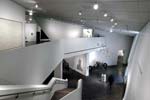 ©Bitter Bredt Denver Art Museum, Frederic C. Hamilton Building, 2006 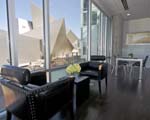 ©Bitter Bredt Denver Art Museum Residences 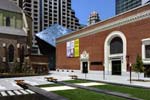 ©Bitter Bredt Contemporary Jewish Museum, San Francisco, 2008; Museum and Plaza 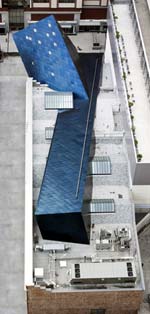 ©Mark Darley Contemporary Jewish Museum, San Francisco, 2008; three thousand steel-blue diamonds emerge into the sky 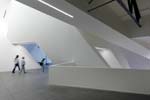 ©Bitter Bredt Contemporary Jewish Museum, San Francisco; gallery interior 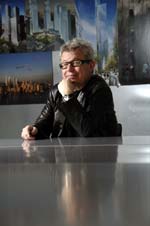 ©Michael Klinkhamer Photography Daniel Libeskind |
© 2011 ArchNewsNow.com